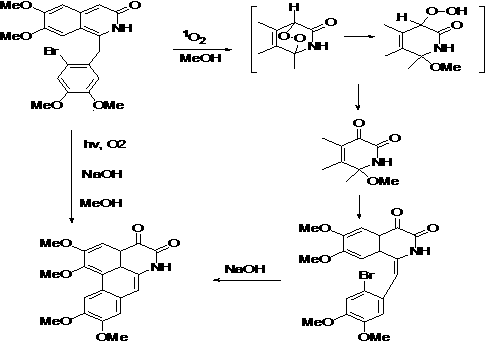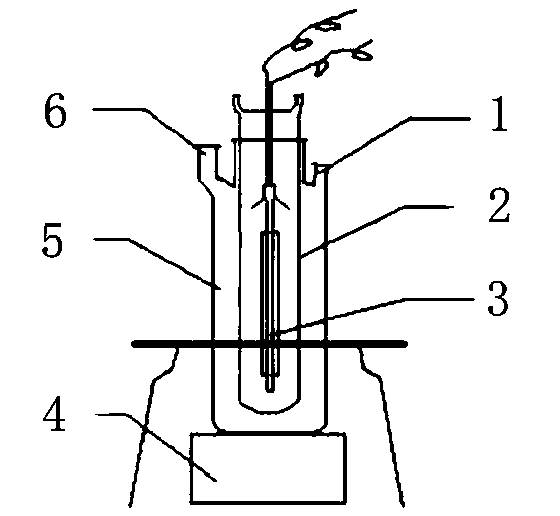Photosensitized oxidation reaction equipment and application thereof
A technology of photosensitive oxidation and reaction equipment, applied in the chemical/physical/physical-chemical process of applying energy, etc., can solve the problems of reaction dead zone, low degree of turbulence, small height and diameter, etc., and achieve high utilization of light and photoelectric conversion. The effect of high rate and reduced complexity
- Summary
- Abstract
- Description
- Claims
- Application Information
AI Technical Summary
Problems solved by technology
Method used
Image
Examples
Embodiment 1
[0043] Dissolve 10 Kg of citronellol in 50L of dichloromethane, add 10g of tetraphenylporphyrin therein, and stir evenly; divide into 10 parts, add in 10 photoreactors 2 respectively, and place the constant temperature tank 1 The temperature drops to -30 o C, after half an hour of passing oxygen through the interface 2-6 at the bottom of the chromatography column 2-1, turn on the LED light source, and allow the reaction system to remain at this temperature for 10 hours; then, slowly return the temperature of the thermostat 1 to At room temperature (25°C), collect the reaction solution, add 100Kg of saturated sodium thiosulfate solution, stir thoroughly for 1 hour, and separate the liquids; then add 30Kg of saturated sodium thiosulfate solution to the dichloromethane phase, stir well, and separate the organic phase; dry the organic phase with anhydrous sodium sulfate; filter, separate the aqueous phase from the dichloromethane phase, add 50 g of concentrated sulfuric acid to th...
Embodiment 2
[0045] Dissolve 10Kg of dihydroartemisinic acid in 60L of toluene, add 5g of photosensitizer tetraphenylporphyrin and 2Kg of trifluoroacetic acid into the system, stir, divide into 10 parts, and add to 10 photoreactors 2 respectively , lower the temperature of the constant temperature tank 1 to -40°C, slowly introduce air from the interface 2-6 at the bottom of the chromatography column 2-1 for half an hour, turn on the LED light source, and let the reaction system react at this temperature for 5 hours; then , the temperature of the thermostat 1 was slowly returned to room temperature (25° C.), and the reaction was carried out for 1 hour. Turn off the light source, stop feeding the air, pour out the reaction solution, add saturated NaHCO 3 20 L of aqueous solution was stirred, the organic phase was separated, the organic phase was dried, and concentrated under reduced pressure. The residue was subjected to silica gel column chromatography to obtain crude artemisinin, which was...
PUM
 Login to View More
Login to View More Abstract
Description
Claims
Application Information
 Login to View More
Login to View More - R&D
- Intellectual Property
- Life Sciences
- Materials
- Tech Scout
- Unparalleled Data Quality
- Higher Quality Content
- 60% Fewer Hallucinations
Browse by: Latest US Patents, China's latest patents, Technical Efficacy Thesaurus, Application Domain, Technology Topic, Popular Technical Reports.
© 2025 PatSnap. All rights reserved.Legal|Privacy policy|Modern Slavery Act Transparency Statement|Sitemap|About US| Contact US: help@patsnap.com



